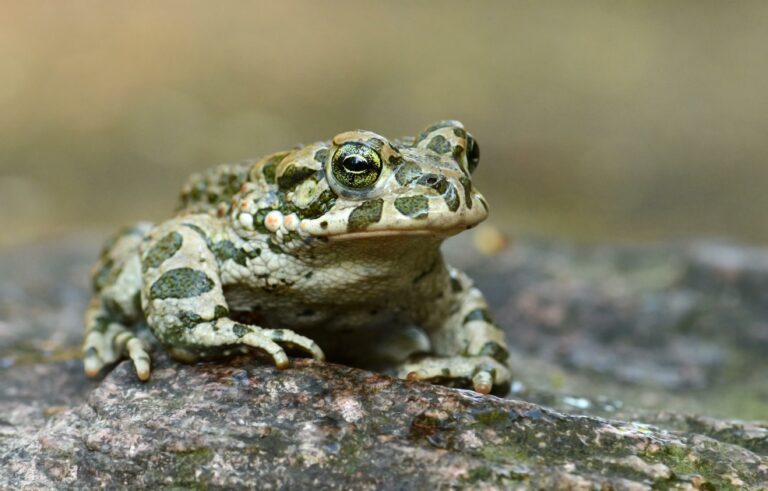Bufotes viridis

The European Green Toad, also known as the Common Green Toad, gets its name from its ability to change its body color between light and dark green or beige. The body of Bufotes viridis is beige with large, irregular green spots on the upper side. Females can reach a body length of over 10 cm, while males are slightly smaller with a length of 8-9 cm. They prefer habitats that include small to medium-sized standing water bodies with little vegetation, combined with vegetation-poor areas where they can easily burrow into the soil for overwintering. During the breeding season, which begins in March, males develop dark-colored nuptial pads on the first three fingers. The female lays up to 15,000 black eggs in the form of 2-4 meter-long strings. The breeding period can extend until August. The European Green Toad faces predation from various bird and snake species, as well as fish that feed on its tadpoles. Other threats include intensification of agriculture and the filling in of small water bodies (Glandt 2018).
Diet: Bufotes viridis primarily feeds on beetles, spiders, ants, snails, and worms (Glandt 2018).
Threat Status: The European Green Toad is classified as “endangered” according to the Red List of Germany. It is also considered “strictly protected” throughout Europe under Annex IV of the Habitats Directive.
-
Glandt D (2018)Praxisleitfaden Amphibien- und Reptilienschutz. Schnell – präzise – hilfreich. Berlin, Heidelberg: Springer Berlin Heidelberg.